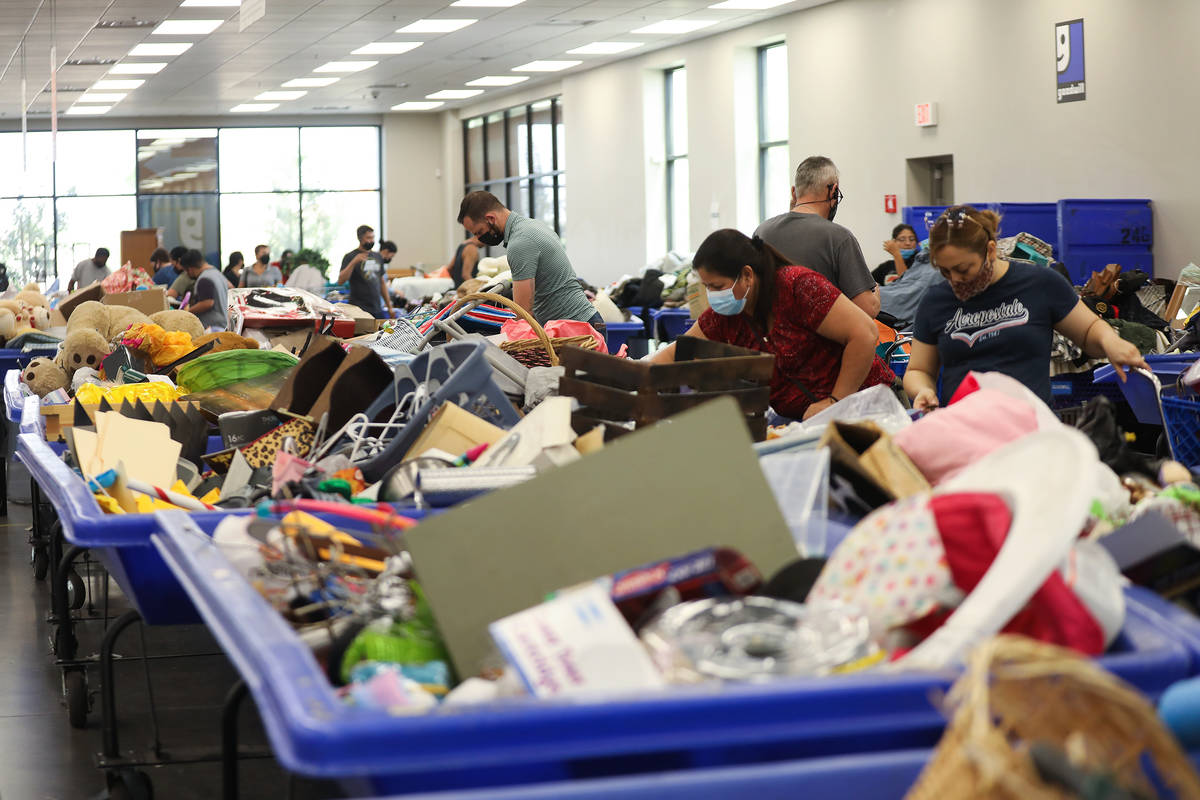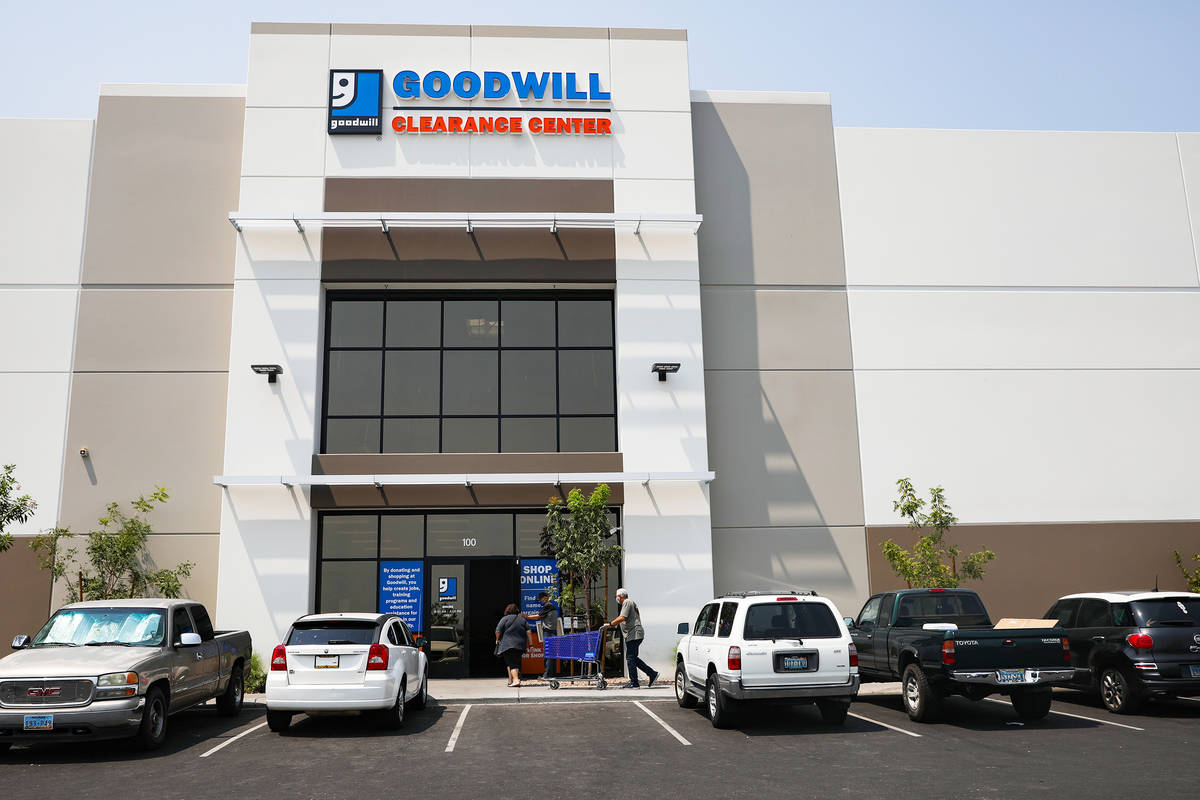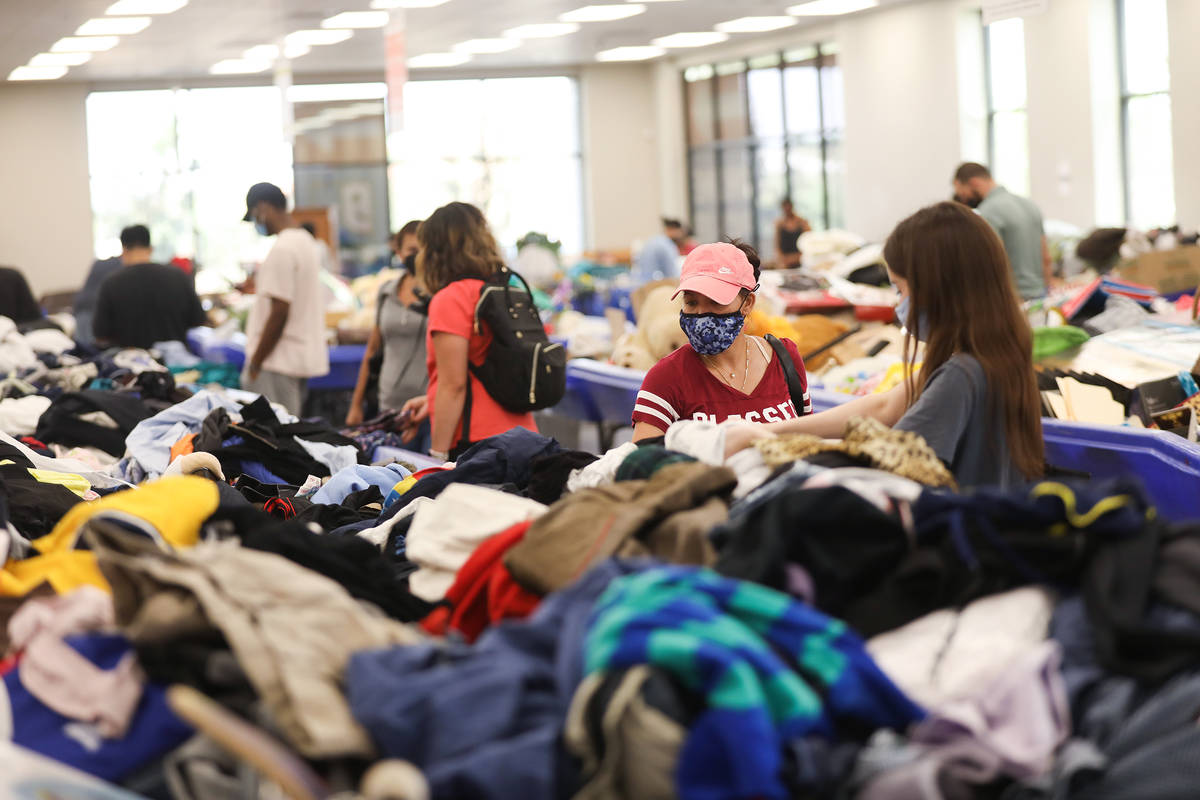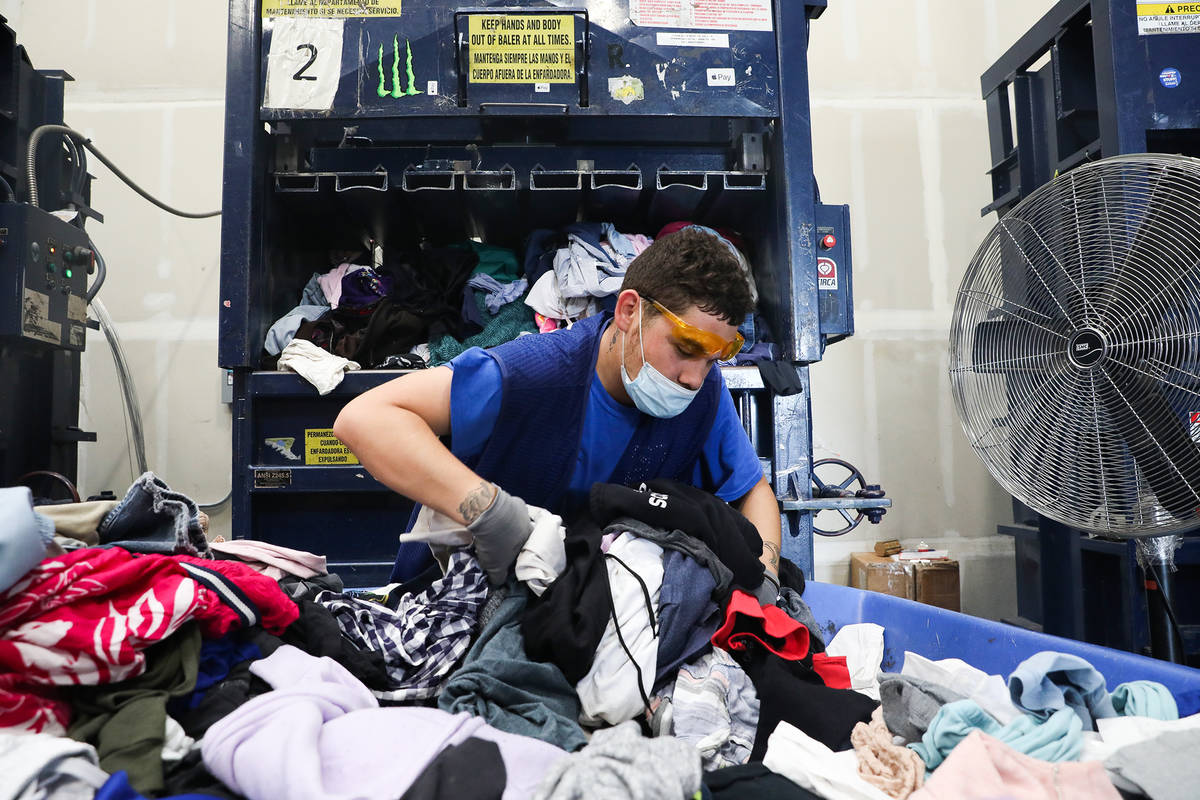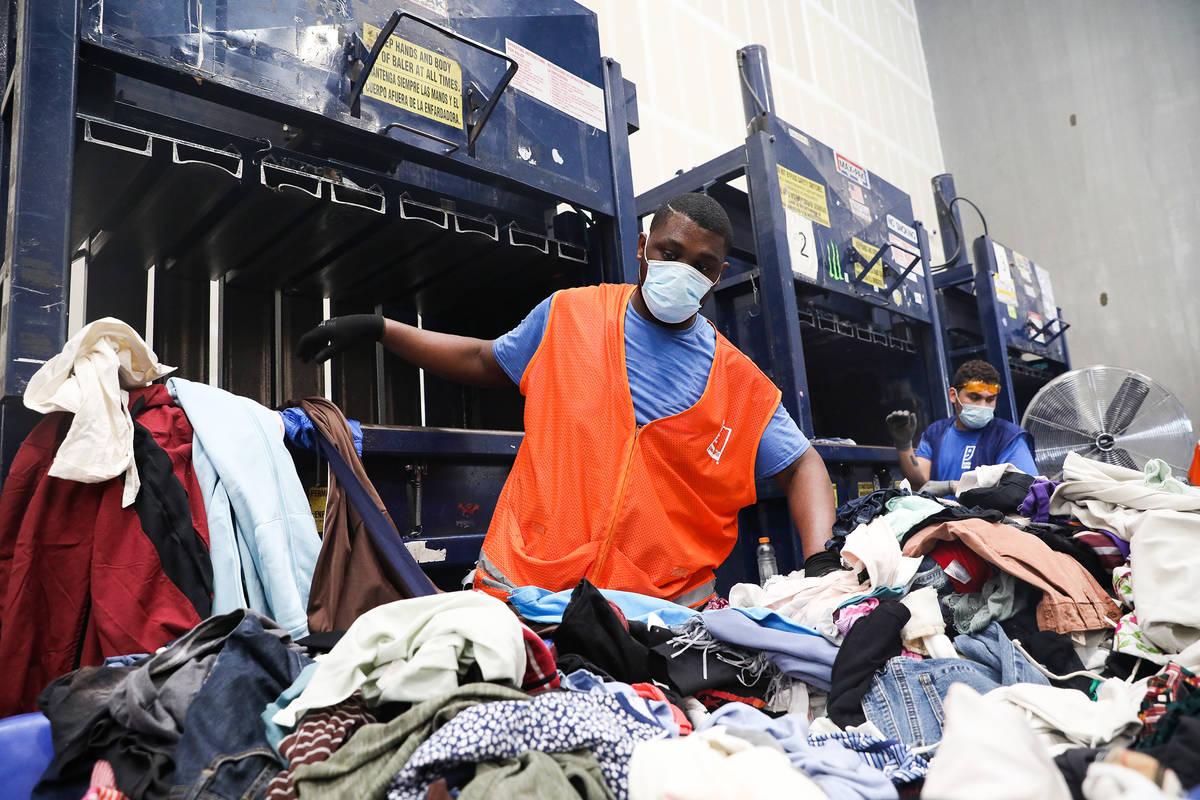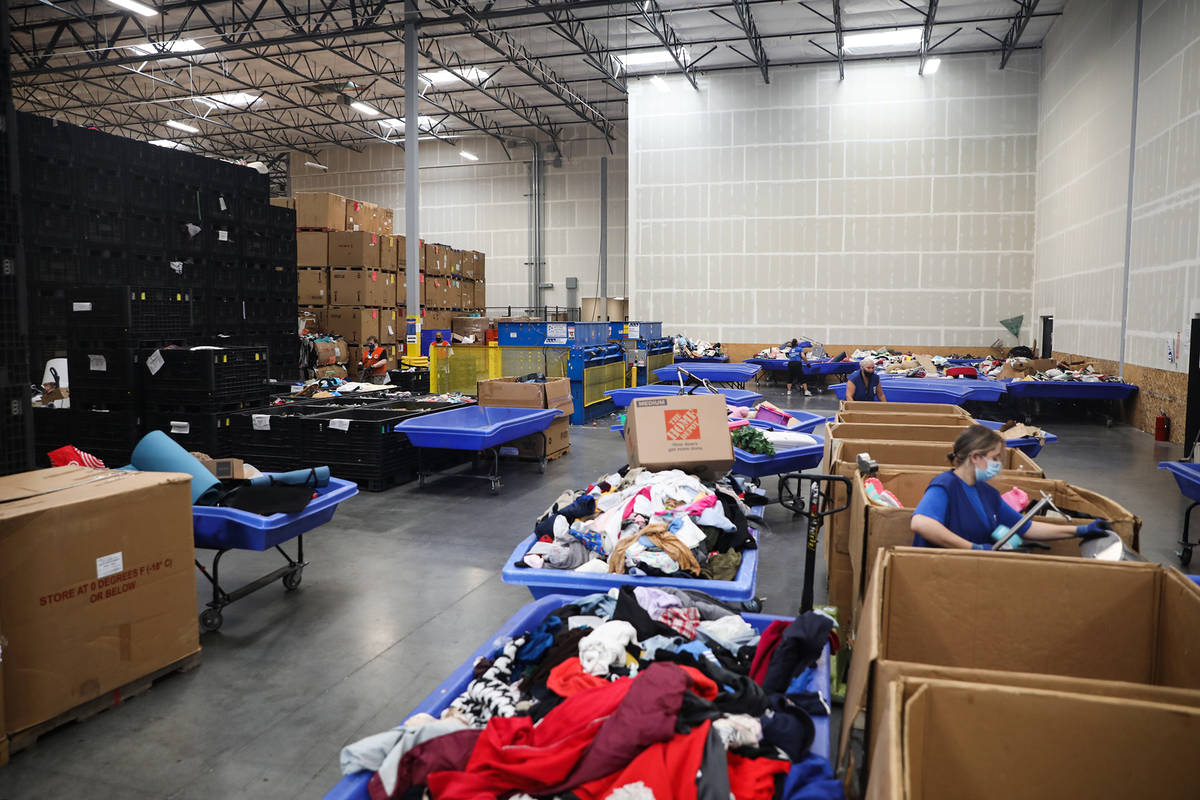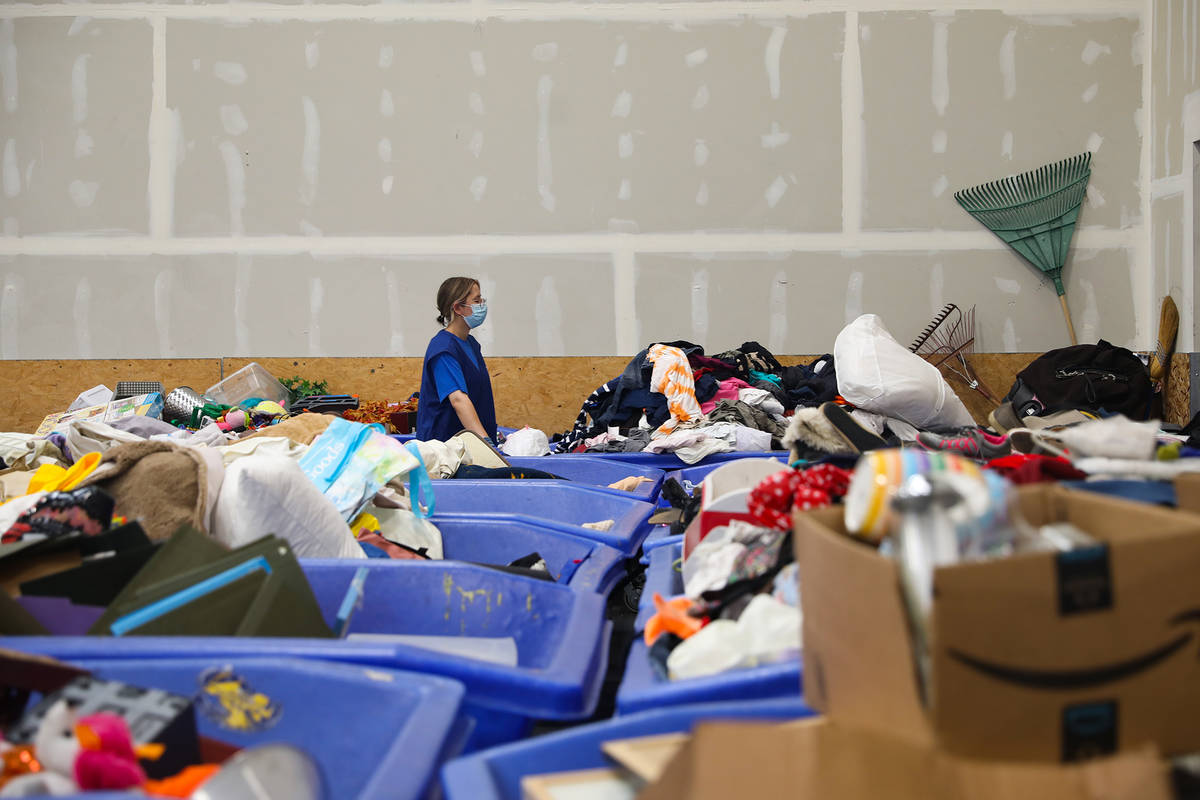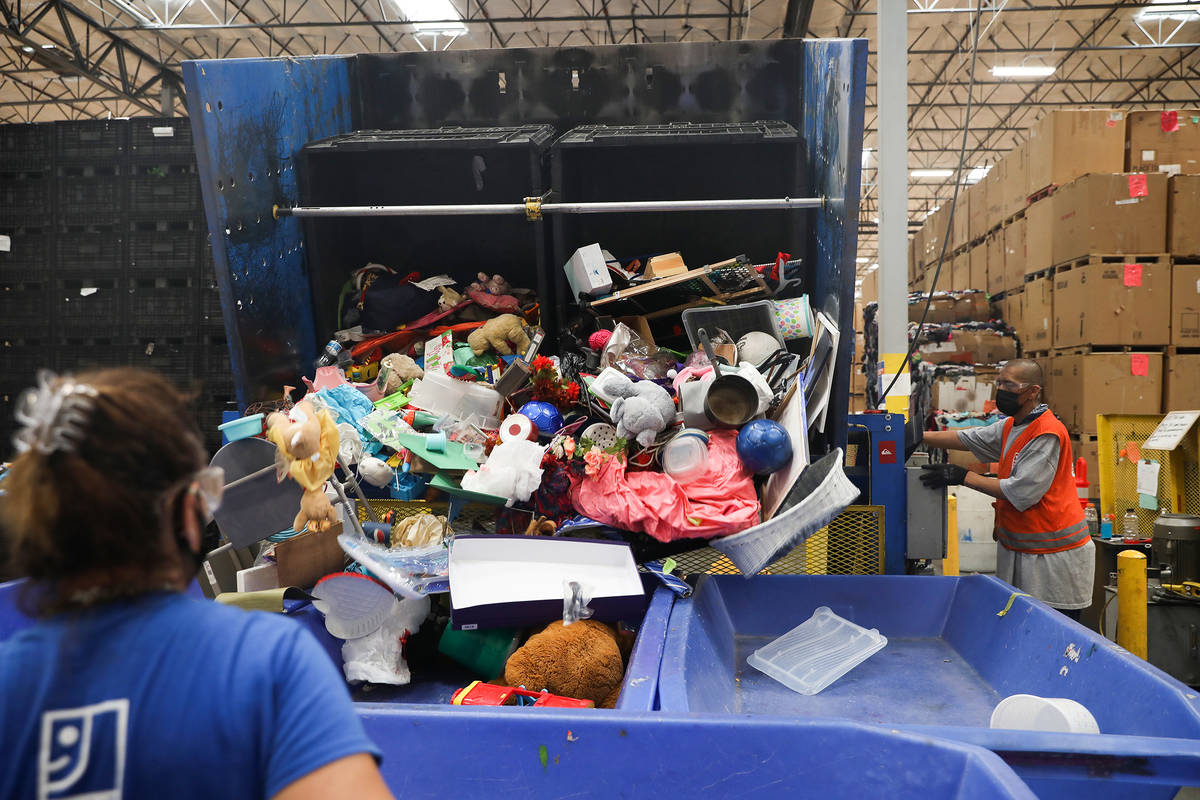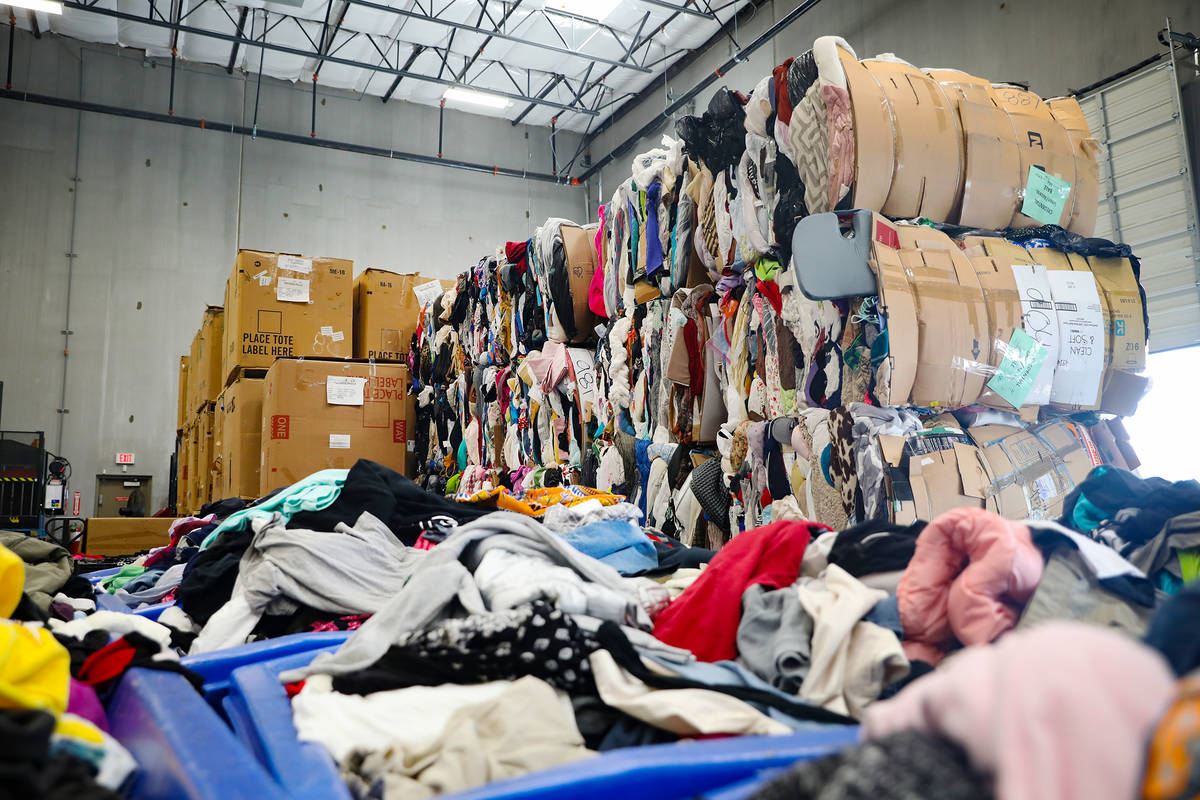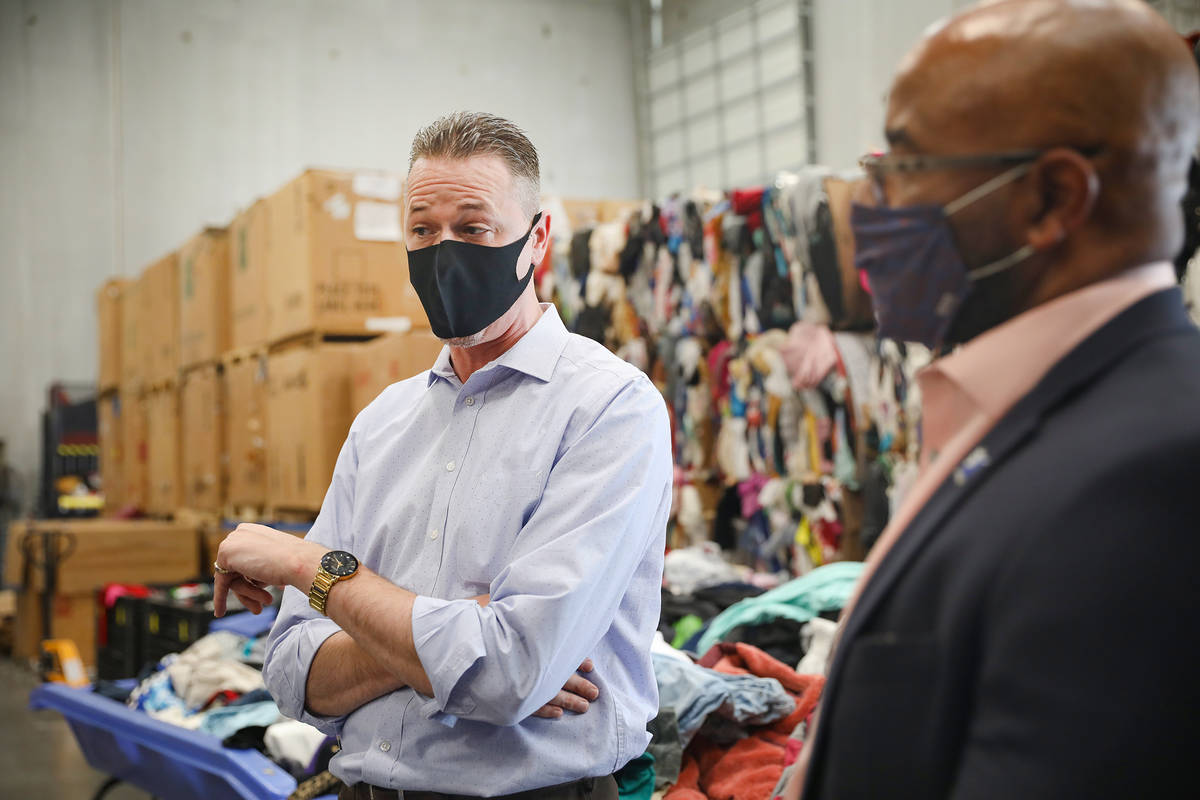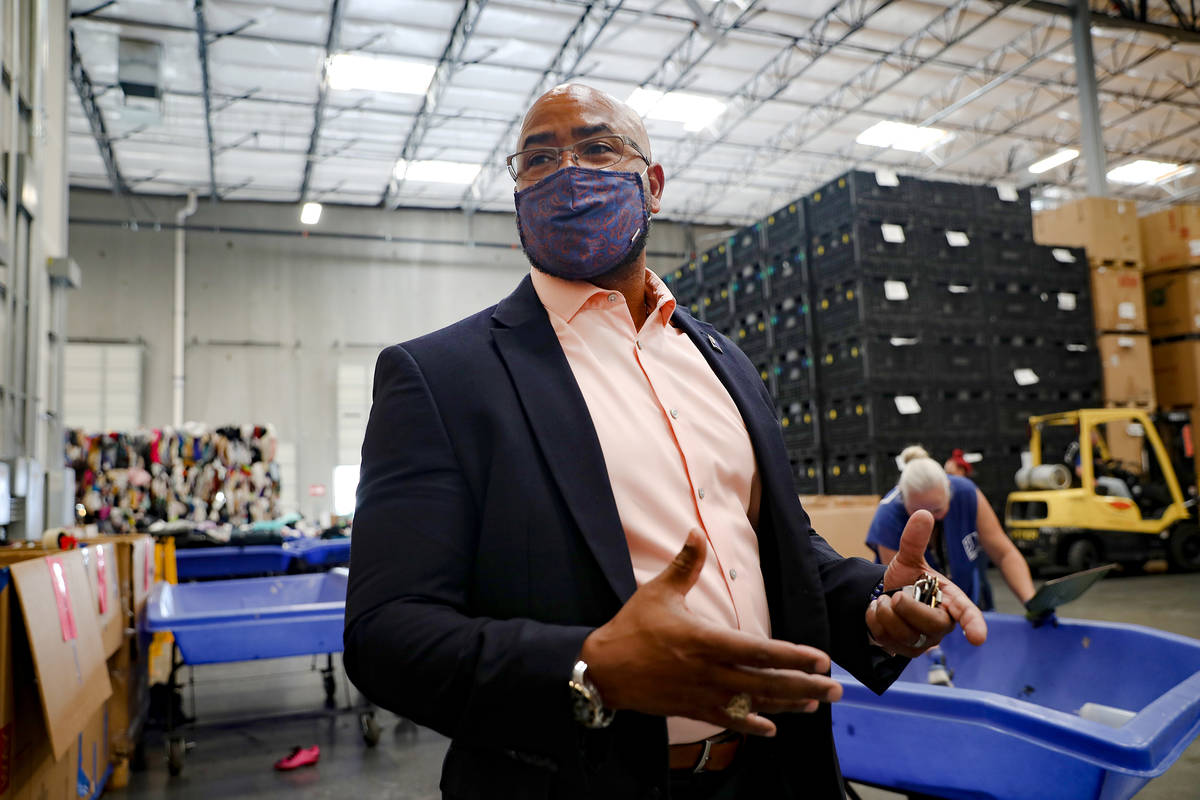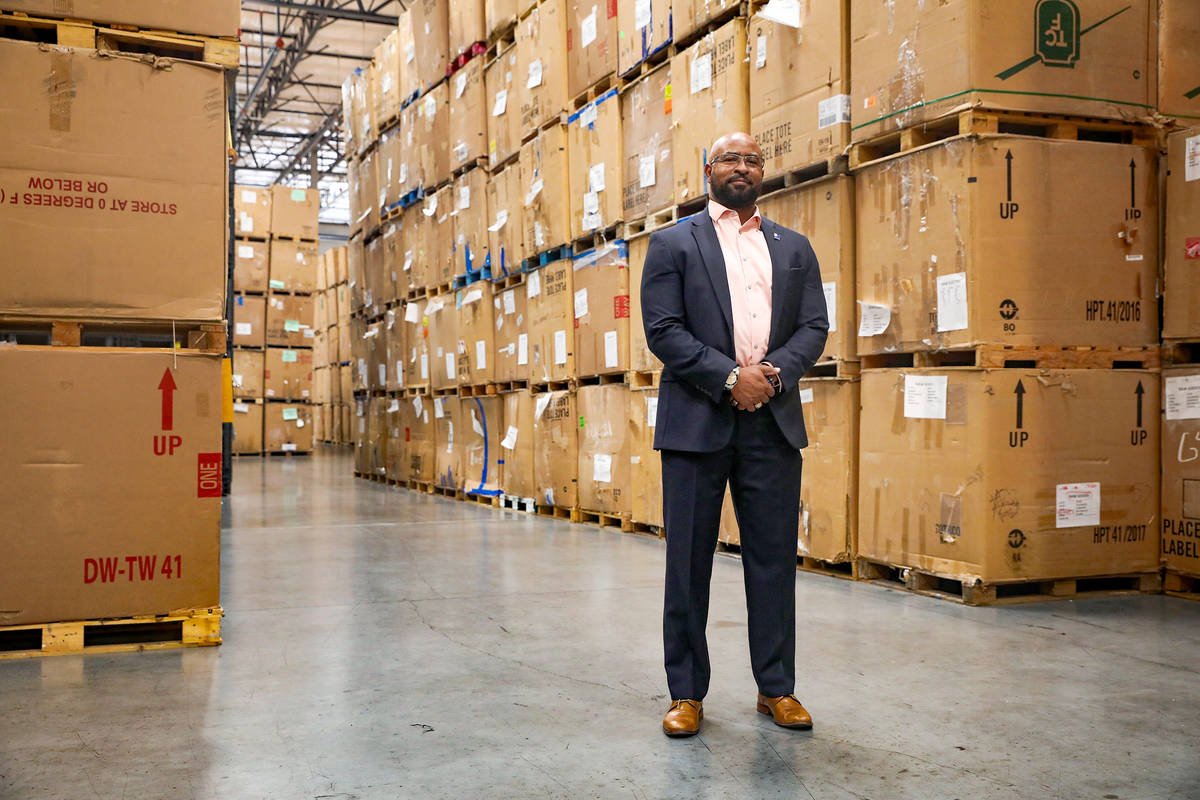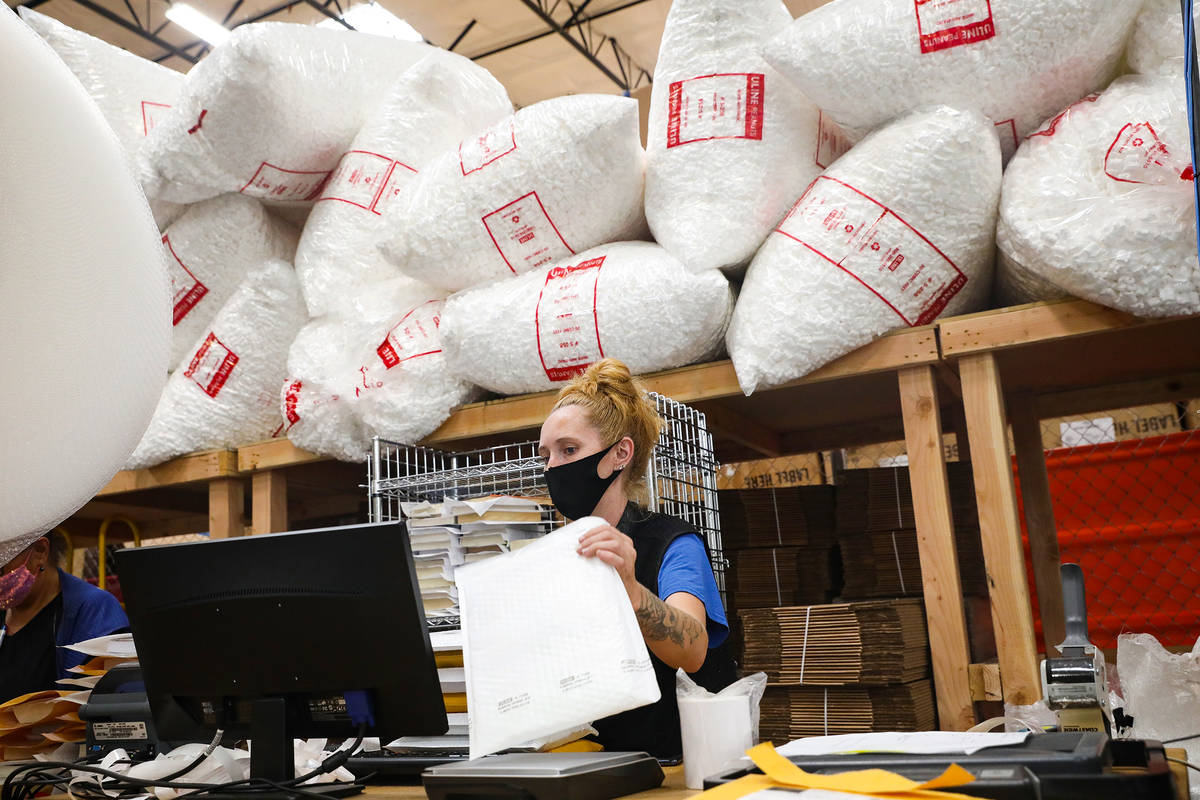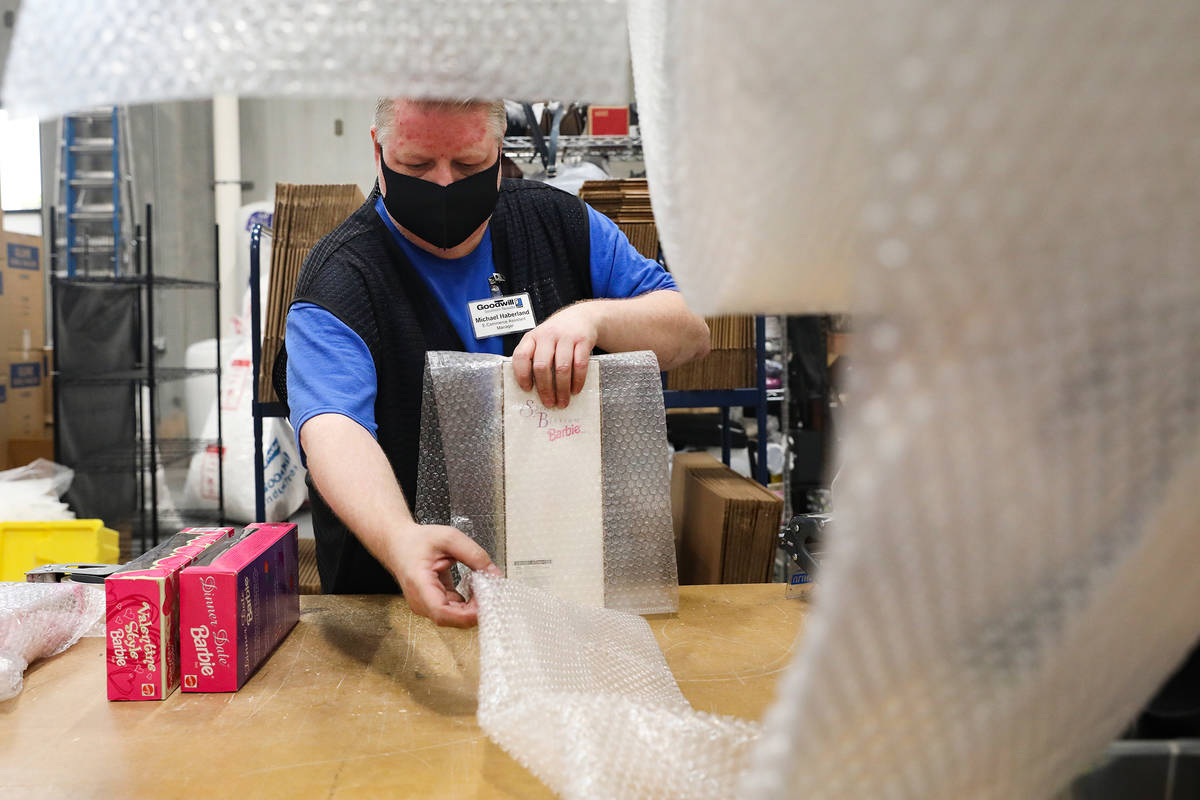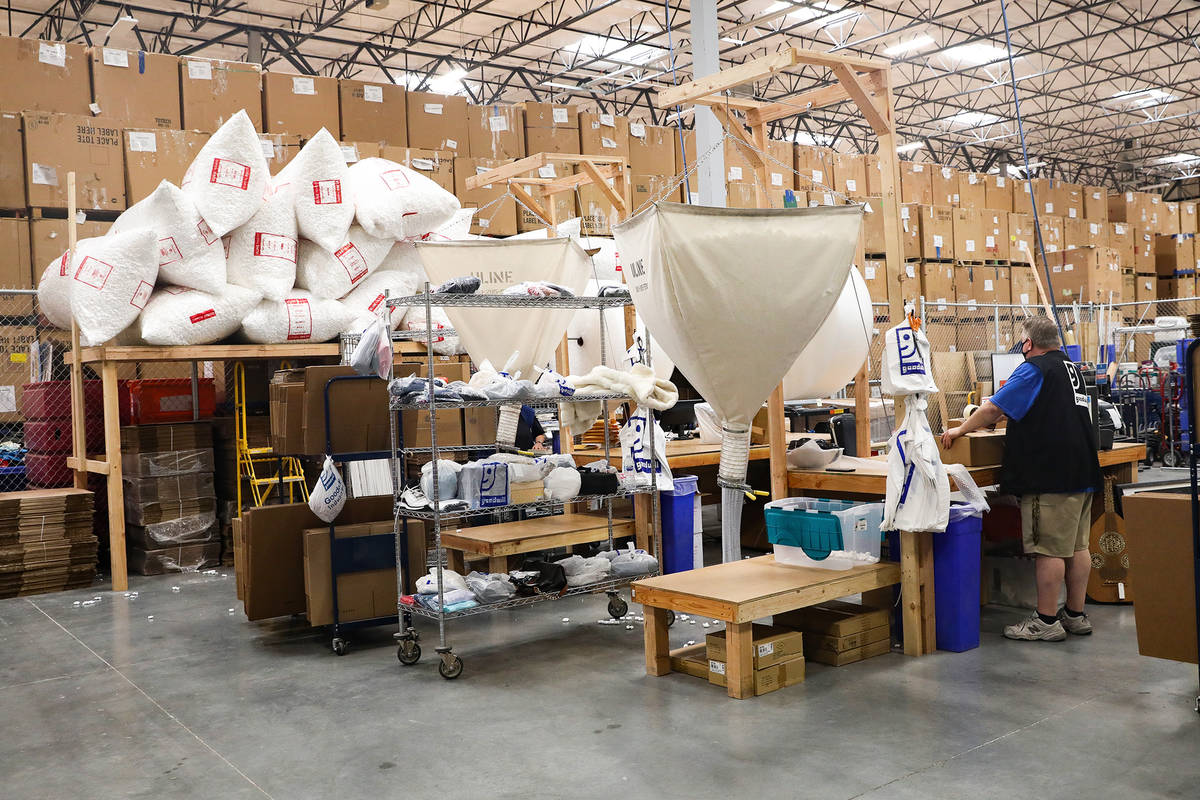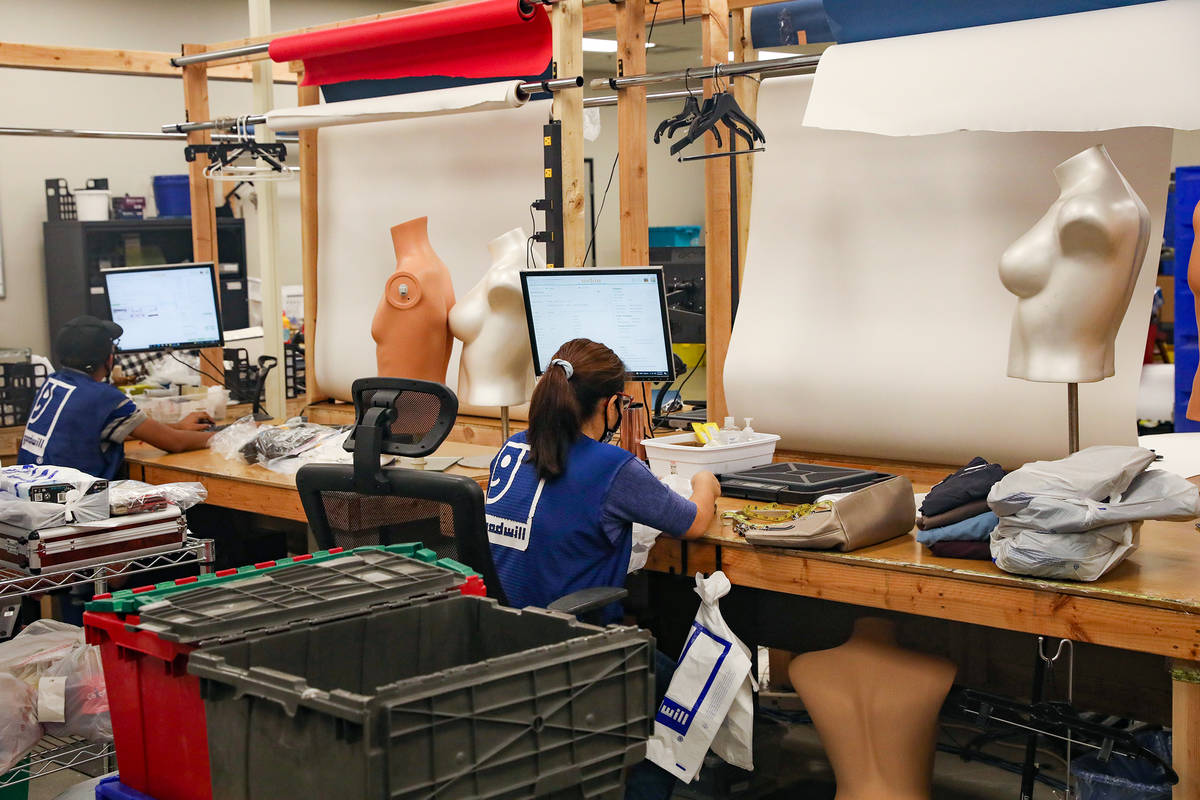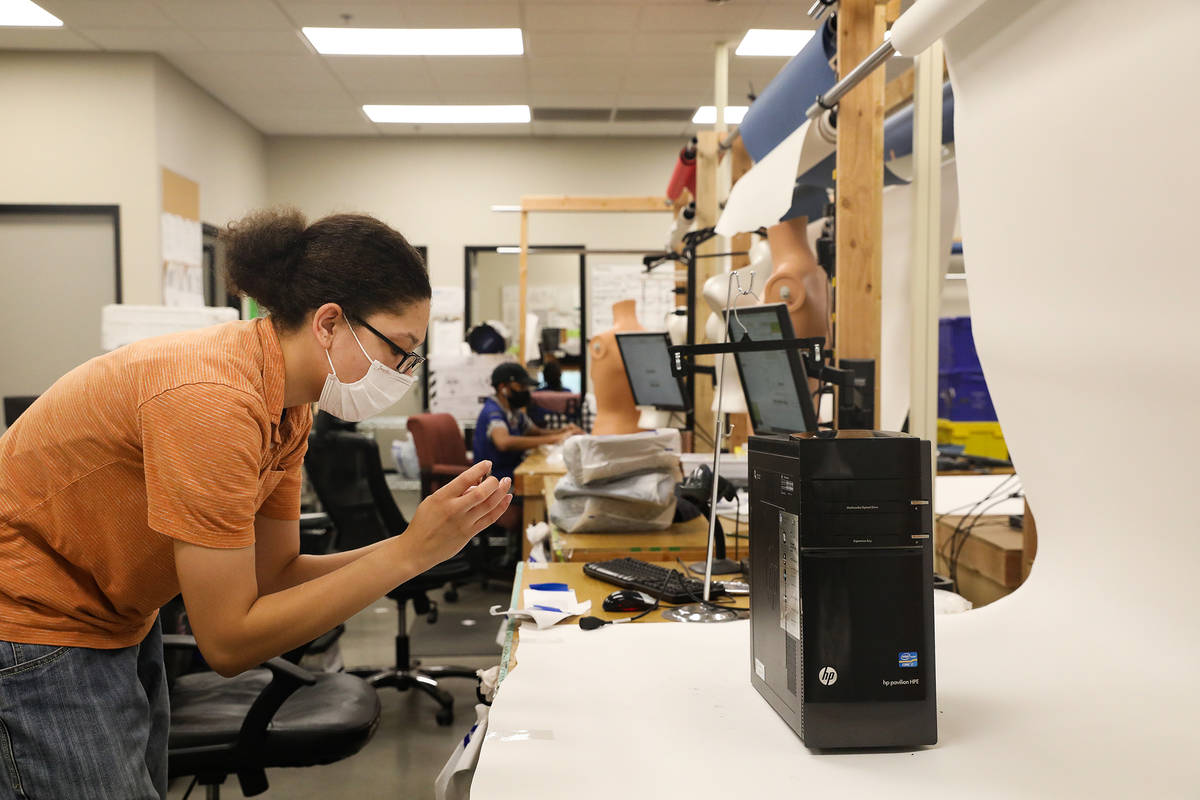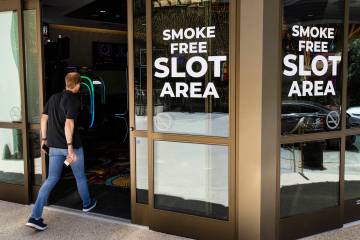Goodwill thrives again after bankruptcy, pandemic-induced shutdown
Thousands of Las Vegas residents stuck at home in 2020 had the same idea: They would donate their old T-shirts, shoes, dishes, computers and assorted tchotchkes to Goodwill of Southern Nevada.
At thrift stores, donation centers and processing facilities in the valley, the coronavirus pandemic put up a new challenge: How could the nonprofit organization work through massive donations and weeks of retail closures while still helping job seekers?
From long lines to donate purged clothing and housewares to new virtual career services and programming, the pandemic acted as a catalyst for long-desired changes at the nonprofit known for its thrift stores. Leaders hope that the organization’s increased visibility during the pandemic will lead to more job seekers in their career centers and online services.
Thrifting during pandemic
Almost 60 days of in-store closures in spring 2020 caused significant challenges for the organization. Retail operations accounted for about $28.2 million of the $32.4 million revenue in 2020, financial statements show.
“At Goodwill, we rely primarily on those thrift stores,” CEO Rick Neal said. “Retail — shut that down, we feel it immediately and it’s like shutting off air.”
Early closures caused Goodwill to lay off 322 employees, the majority of whom worked in retail, the nonprofit said. Those employees were offered right of first refusal upon the stores’ reopening, and about 86 percent returned. The organization received a $3.28 million loan through the Paycheck Protection Program, records show.
But the shutdown forced Goodwill to turn its attention to things it had wanted to do for a long time, Neal said. It put more emphasis on its e-commerce auction site, with sales on Amazon and eBay, and moved career services that didn’t require face-to-face contact to the digital space.
E-commerce revenue increased, from about $1.5 million in 2019 to nearly $2 million in 2020, last year’s financial statement shows.
When the retail locations reopened, they were greeted by donors who had just spent weeks cleaning out their homes during the lockdowns, board Chairman Brian Dziminski said. Goodwill received 811,455 community donations of used goods in 2020, up from 793,997 in 2019, according to annual reports.
“Anything you can think of that somebody has in their house eventually ends up at a Goodwill,” Dziminski said. “One of the pluses of (the pandemic) was the amount of people that were forced to be home during that time and did their spring cleaning, the Marie Kondo, ‘What do I need? What gives me the feels? What can I let go?’ We had a good spurt in donations during that time.”
Emerging from bankruptcy
The temporary closures came on the heels of a challenging era for Goodwill of Southern Nevada. The pandemic forced a nearly two-month closure of its retail operations only a year after the organization emerged from Chapter 11 bankruptcy.
The organization filed in 2017 when an aggressive expansion, hefty bond sales and delays in rent payments caused the organization to seek bankruptcy protection.
Unpaid interest accrued during the bankruptcy period, from August 2017 to January 2019, was forgiven by the lender and added to the bond principal, according to the organization’s 2020 and 2019 financial statements.
Goodwill used the bankruptcy to reorganize, redefine staffing and the retail operations’ approach, Dziminski said. It hired Neal about two months after the bankruptcy’s reorganization plan was approved in April 2019.
“Everything turned very positive as we were emerging from the bankruptcy, the approval of our plan and really (increasing) our cash reserves and our efficiency of our operations,” Dziminski said. “Then, bam, pandemic hits, and next thing you know we were part of the shutdown.”
In 2017, the nonprofit employed about 1,000 workers and operated 21 stores. It has since downsized to about 800 employees and 16 retail stores.
Goodwill also consolidated its warehouse operations from two locations to one larger warehouse in August 2020 as part of a plan that began before the pandemic. The nearly 113,000-square-foot space on Dean Martin Drive near Blue Diamond Road also hosts the clearance center — where retail stores’ unsold goods are sold by the pound — e-commerce operation and salvage market processing.
“I also think that what we had gone through previously had put us on a more solid footing to be able to handle that,” Dziminksi said. “To have the cash reserves, to have efficiencies in our operations, to be able to work through that and identify solutions and the opportunities that arose from that.”
Goodwill leadership wants to increase its reach across the region. Neal said he hopes to open another career center in the valley and a retail store per year over the next several years. Officials are considering a thrift store in Mesquite, Dziminski said.
Renewed mission services
The pandemic encouraged Goodwill to reinvigorate its mission services. Local retail funds career services done out of two career centers and some mobile career sites in the Las Vegas area. But the pandemic pushed virtual career coaching online — along with lessons in Microsoft training, resume and interview assistance and other upskill training.
Despite the increase in training, career center use dipped in 2020. Annual reports show Goodwill Career Services placed 1,234 people in jobs last year compared with 2,659 people in 2019. Leaders suspect last year’s economic uncertainty contributed.
“When we reopened, we were a little underwhelmed with how many people actually hit the career centers,” Neal said. “Now, the career centers are hopping. We have seen a significant increase in people coming back looking for work, looking for improvement.”
Neal wants the future of Goodwill’s career services to keep an eye on how to diversify career training for new career fields in Southern Nevada. It helped facilitate boot camp-like pilot programs last year, including a partnership with NV Hope and NV Careers for a certified nursing assistant introductory training week.
Programs that begin education and certification in fast-growing fields like health care, construction, skilled trade and digital skills are his focus, Neal said. While digital skills could be anything from teaching someone about word processors and other common computer programs, it could also help workers in trades that are seeing growing use of technology, like programs that read electric meters or air conditioning units.
“(Digital skills) can be a ubiquitous term,” Neal said. “It can mean everything, or it can mean nothing, depending on who you’re talking to. When I use that term, I’m not talking about turning people into computer programmers. Digital platforms and digital ways of operating undergird everything we do to include even some of those skilled trades.”
McKenna Ross is a corps member with Report for America, a national service program that places journalists into local newsrooms. Contact her at mross@reviewjournal.com. Follow @mckenna_ross_ on Twitter.



